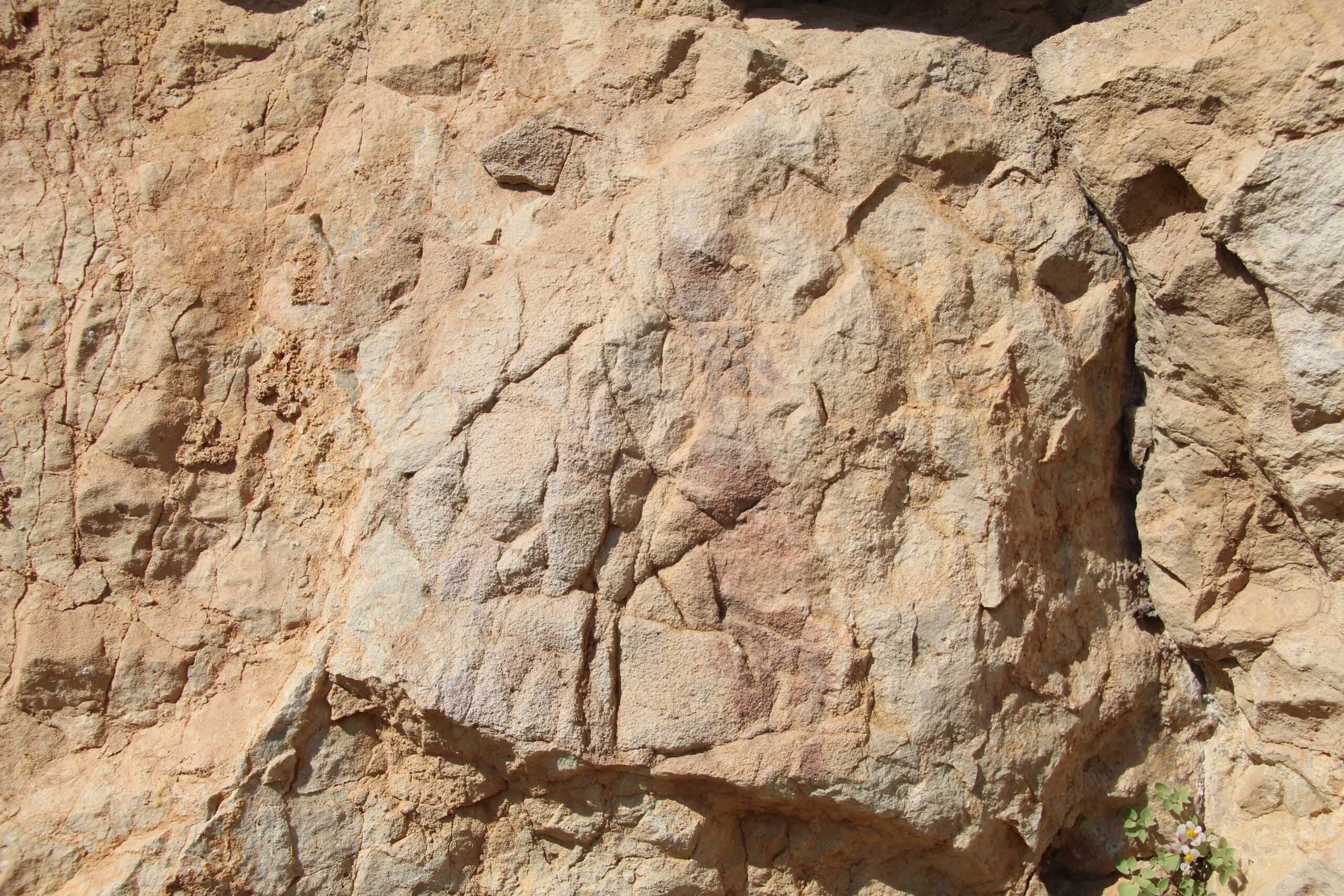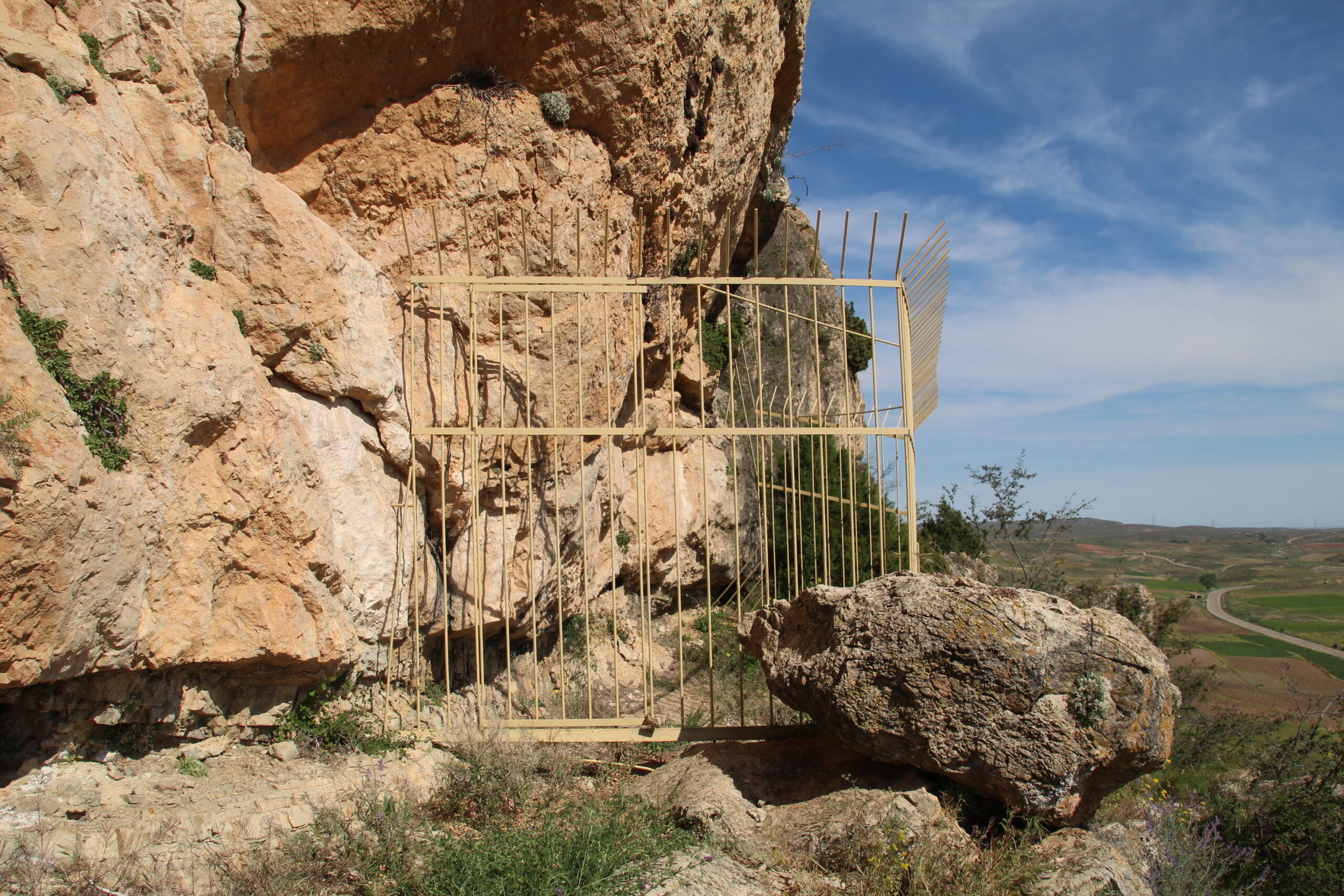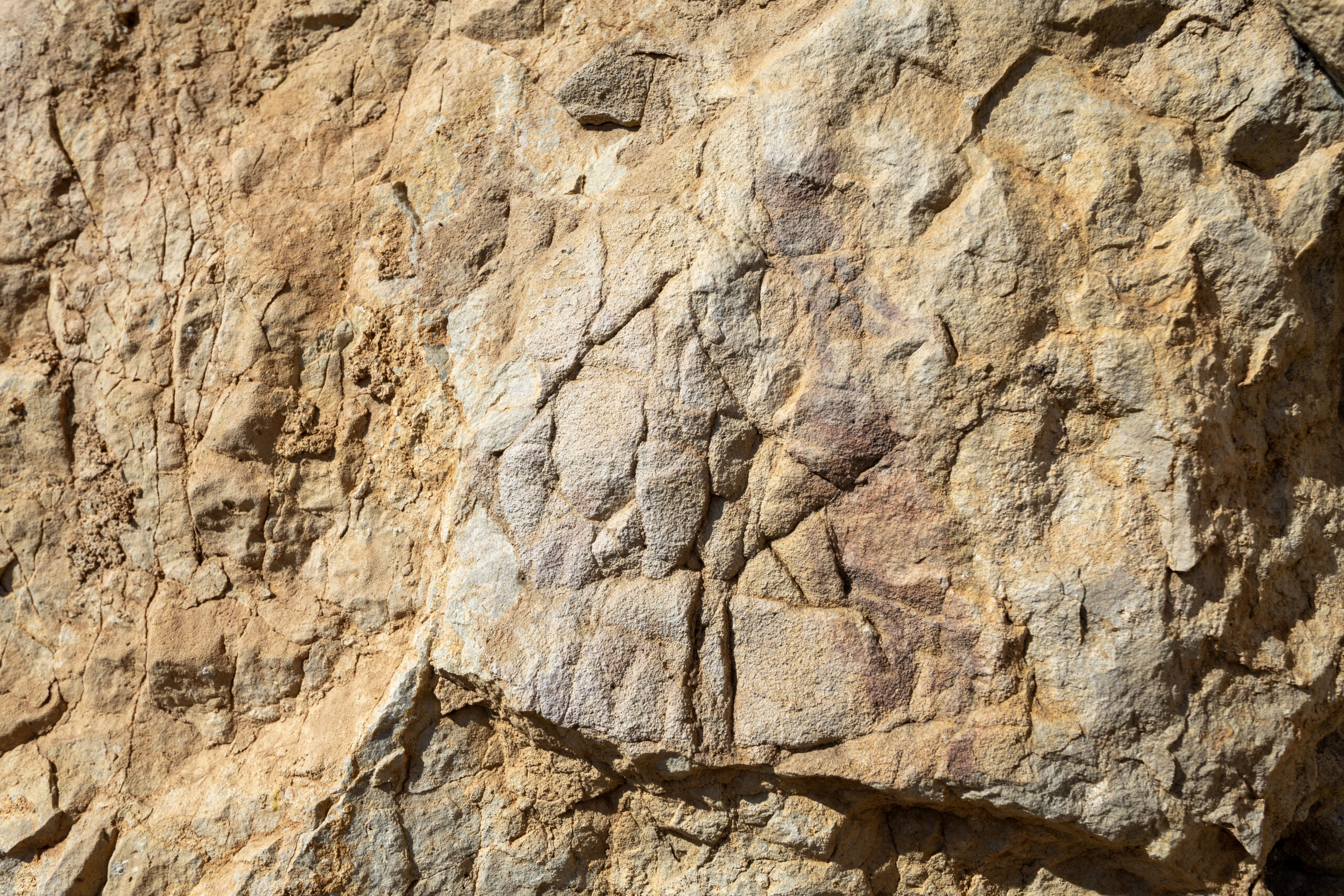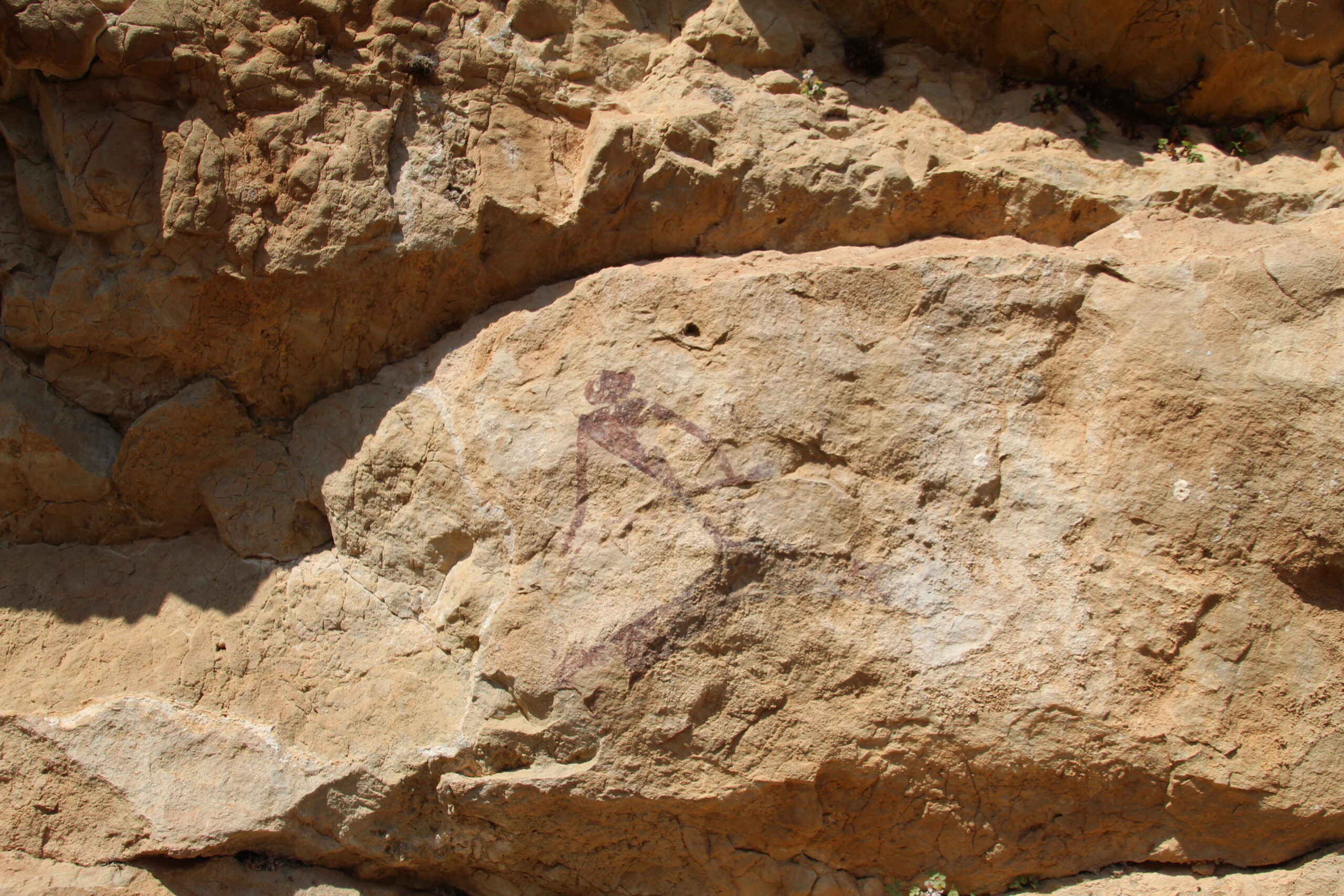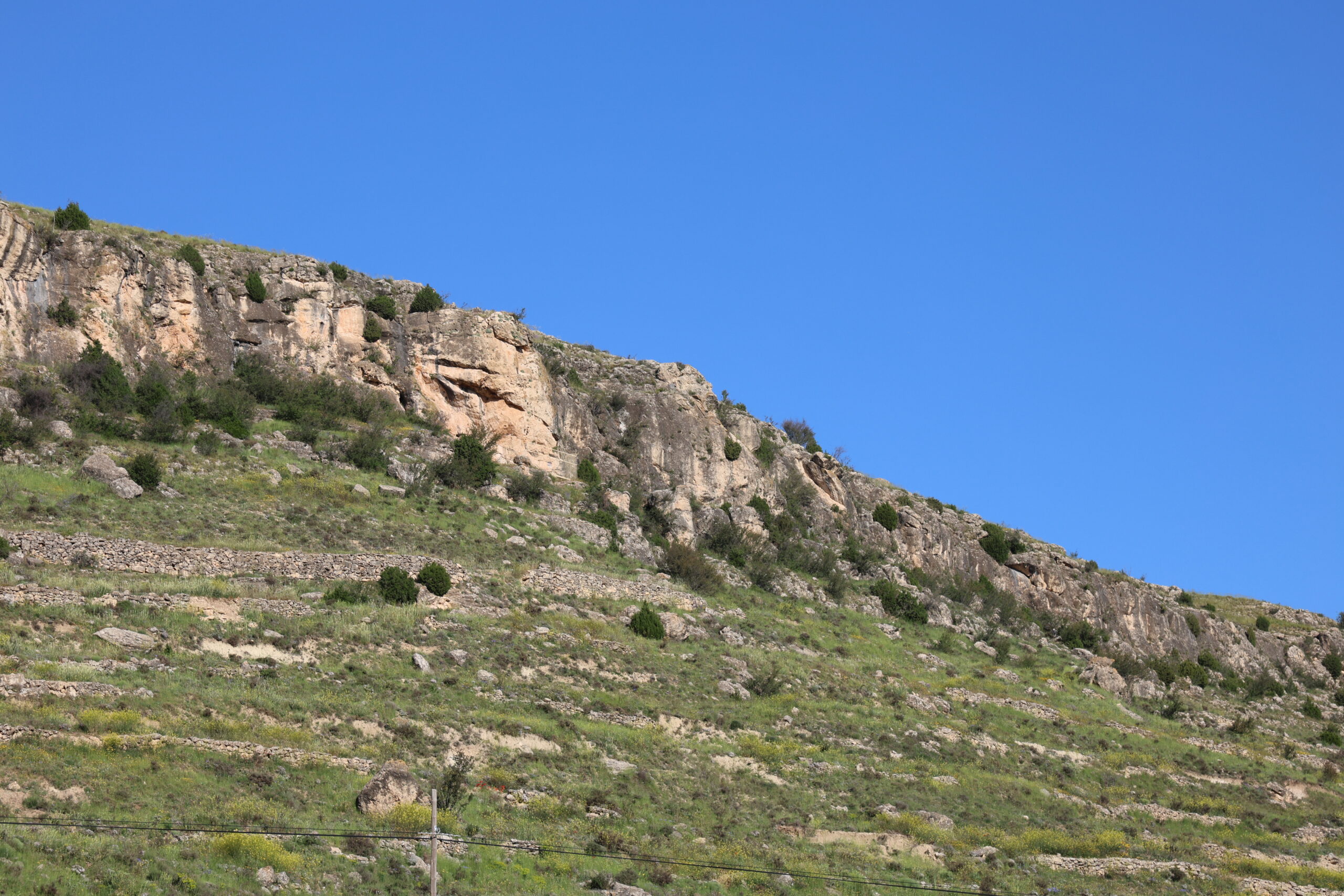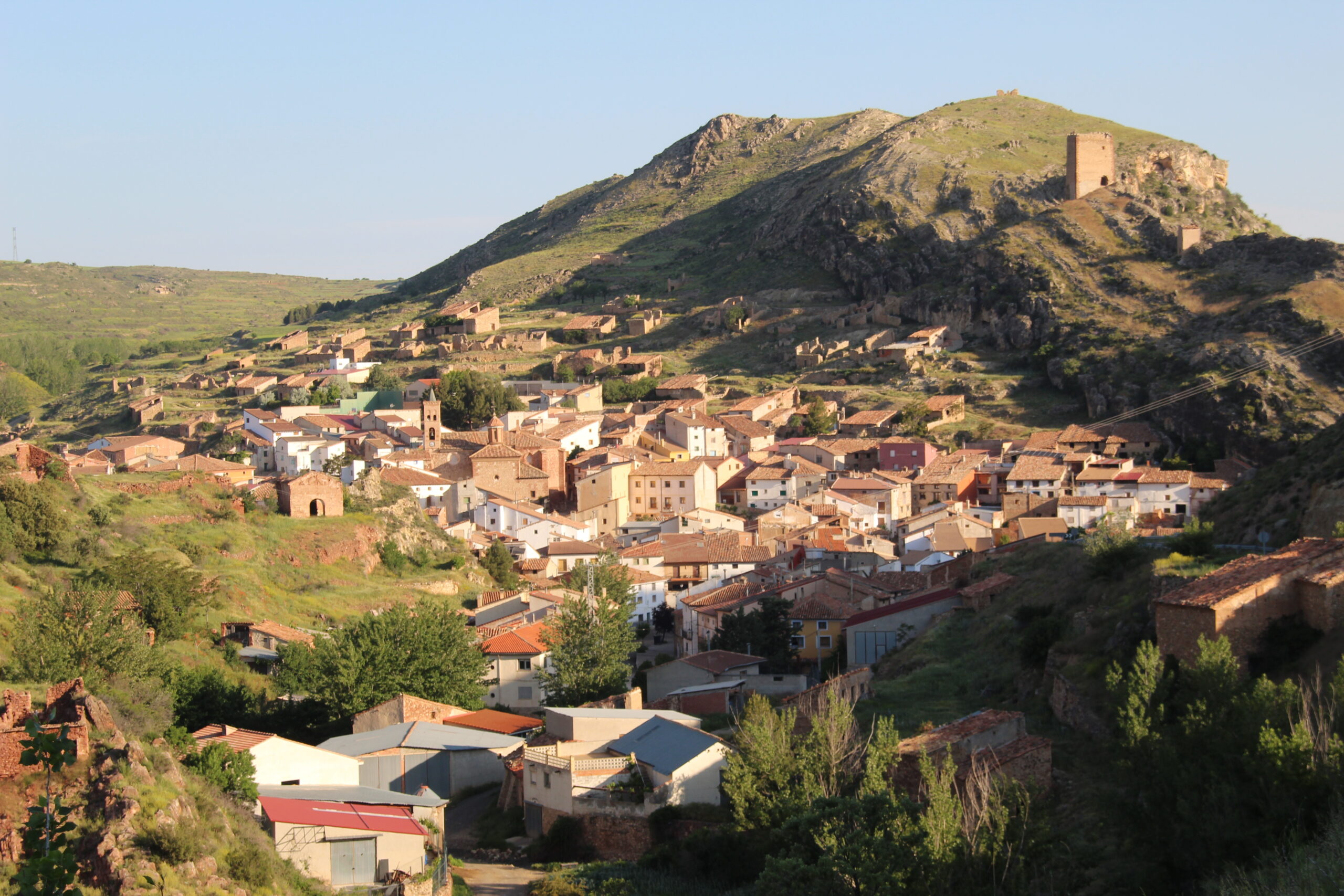Age of the artistic representations: The highlight of this site is the extraordinary large archer, 35 centimeters tall, larger than usual. It is located at the top of the shelter, under a small visor formed by the rock, easily visible above the fence. He is a typical Levantine archer, with his legs wide apart in a running stance and a long bow at waist height. His legs are disproportionately thick and appear to be adorned or bound, perhaps with gaiters. He carries what appear to be two bows, which is unusual, and a bundle of arrows. His body is slender, with a triangular chest and round head.
In the lower right-hand corner, with great difficulty, another figure can be seen, possibly another archer in very poor condition. It has the same convention of thick, open legs, triangular chest, and slender body, and holds an elongated, arched object, probably a bow. Although the torso alone measures 27 cm, the complete figure could have reached half a meter in height. Both figures are typical representations of Levantine art, very similar to those found in other areas of the Spanish Levante, such as in the nearby town of Obón, in the Martín River Cultural Park.
Below the first archer, there are three other figures. In the center, a female figure with a skirt from which hangs a kind of fringe or belt. With thick legs and a circular head, she appears to be holding her hands forward as if she were holding an object or working. On either side, there are two badly damaged figures. On the right, a possible archer, and on the left, a very small figure, perhaps a child or an archer, who appears to be bending down to pick up an elongated object. To the left of the panel, there are more extremely blurred figures that are difficult to identify.
General description of the destination: The highlight of this site is the extraordinary large archer, 35 centimeters tall, larger than usual. It is located at the top of the shelter, under a small visor formed by the rock, easily visible above the fence. He is a typical Levantine archer, with his legs wide apart in a running stance and a long bow at waist height. His legs are disproportionately thick and appear to be adorned or bound, perhaps with gaiters. He carries what appear to be two bows, which is unusual, and a bundle of arrows. His body is slender, with a triangular chest and round head.
In the lower right-hand corner, with great difficulty, another figure can be seen, possibly another archer in very poor condition. It has the same convention of thick, open legs, triangular chest, and slender body, and holds an elongated, arched object, probably a bow. Although the torso alone measures 27 cm, the complete figure could have reached half a meter in height. Both figures are typical representations of Levantine art, very similar to those found in other areas of the Spanish Levante, such as in the nearby town of Obón, in the Martín River Cultural Park.
Below the first archer, there are three other figures. In the center, a female figure with a skirt from which hangs a kind of fringe or belt. With thick legs and a circular head, she appears to be holding her hands forward as if she were holding an object or working. On either side, there are two badly damaged figures. On the right, a possible archer, and on the left, a very small figure, perhaps a child or an archer, who appears to be bending down to pick up an elongated object. To the left of the panel, there are more extremely blurred figures that are difficult to identify.
History of the site: La Hoz de la Vieja is a medieval village, strategically located at the point where three ravines meet: El Chorredero, El Vadiello, and El Barranquiello. Here, the Armillas River forms a Hoz, a small, curved, narrow, and steep gorge. The name “Hoz” refers to this steep gorge, a natural passage that has been crucial since prehistoric times, both for territorial control and as a lookout point for hunting.
The nickname “de la Vieja” does not mean “old,” but derives from the Aragonese term “rubiello,” which means “reddish,” in reference to the color of the rocks in the area. In the Middle Ages, it was known as “Foz Rubiella.” Over time, “Rubiella” evolved into ‘Viella’ and finally “Vieja.”
The importance of this pass is also reflected in the medieval tower in the area. Built in 1363 during the War of the Two Peters, it was an initiative of the residents themselves to avoid paying the taxes demanded by the Community of Villages of Teruel for using the castle of Montalbán in case of danger. Beneath this tower, the remains of an Iberian and a Roman fortification have been found, both built with the same objective of controlling this pass. A narrow pass that has been strategic since prehistoric times and explains the location of the rock shelter with cave paintings.

